AM | Near infrared optical nanoenzymes: synergistic enhancement mechanism of MXeneMOFs and multimodal anti infection applications

Nanoenzymes are considered a promising antibacterial drug due to their enzyme like activity in chemodynamic therapy (CDT). However, developing new nano enzyme systems to achieve stimulus reactions, efficient nano enzyme catalysis, and multimodal synergistic enhancement remain challenges. In this work, an effective antibacterial application of near-infrared plasma enhanced nanoenzyme catalysis and photothermal performance was proposed. A Ti3C2 MXene/fe MOF composite material (MXM) with near-infrared plasma enhanced CDT and PTT properties was successfully prepared by loading metal organic framework (MOF) nanoenzymes onto Ti3C2 MXene. The mechanism of near-infrared induced local surface plasmon resonance (LSPR) enhancing CDT and PTT was well explained through activation energy (Ea), electrochemical impedance spectroscopy (EIS), X-ray photoelectron spectroscopy (XPS), fluorescence analysis experiments, and finite element simulation. The results indicate that MXene nanosheets have near-infrared plasma excitons, and the generated hot electrons can be transferred to the fe mof surface, promoting Fenton reaction and enhancing CDT. The photothermal heating of MXene prepared by LSPR can also improve the CDT of fe - mof under near-infrared radiation. Both in vitro and in vivo experimental results indicate that the lspr induced MXM system has good antibacterial properties, promoting angiogenesis and collagen deposition, and accelerating wound healing. Therefore, the MXM hybrid has high biocompatibility and LSPR participation, which synergistically enhances the CDT/PTT treatment for multidrug-resistant (MDR) bacterial infections and promotes wound healing as an alternative and effective antibacterial platform.
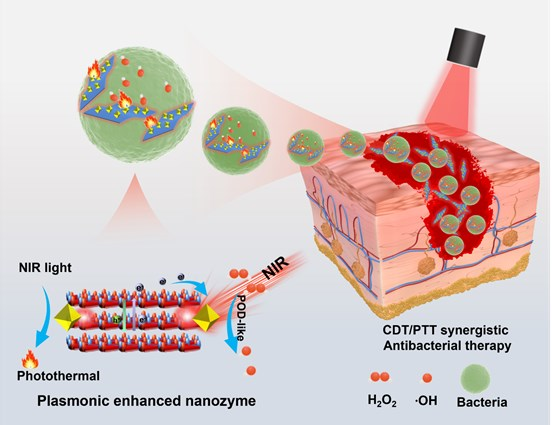
Innovation points
1. Utilizing the LSPR effect of Ti3C2 MXene, the active center Fe atom of Fe MOFs nanoenzymes was activated through hot carrier transfer, promoting Fenton reaction and achieving a 2-fold increase in enzymatic reaction rate under NIR excitation.
2. The interaction mechanism between MXene and Fe MOFs and the mechanism of LSPR enhanced enzymatic reaction were verified through activation energy, electrochemical impedance, in situ X-ray photoelectron spectroscopy, and fluorescence analysis. The enhanced enzymatic activity and synergistic mechanism of MXM under LSPR excitation were systematically elucidated.
3. The synergistic bactericidal effect of MXM material on MRSA under NIR stimulation was verified through in vitro and in vivo experiments, and it can promote angiogenesis and collagen deposition, accelerating wound healing.
4.MXM materials provide a new alternative strategy for the treatment of multidrug-resistant bacteria, utilizing the LSPR effect of Ti3C2 to achieve NIR response and activity regulation of MOFs nanoenzymes, providing a simple and efficient antibacterial strategy.
5. Utilizing the LSPR effect of MXene to regulate the enzymatic activity and heat generation of MOFs nanoenzymes, a synergistic effect of photothermal/enzymatic therapy is achieved, providing new ideas for the regulation of nanoenzyme activity.
6. This strategy not only provides new ideas for antibacterial treatment, but also promotes wound healing, providing reference for clinical treatment and conversion applications.
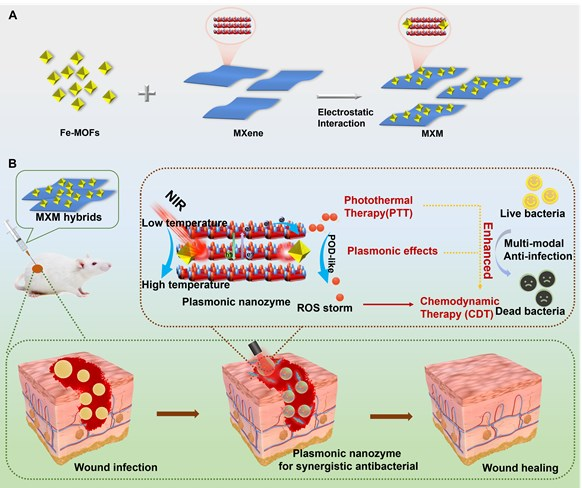
Figure 1. Schematic diagram of synergistic antibacterial therapy of MXM hybrid
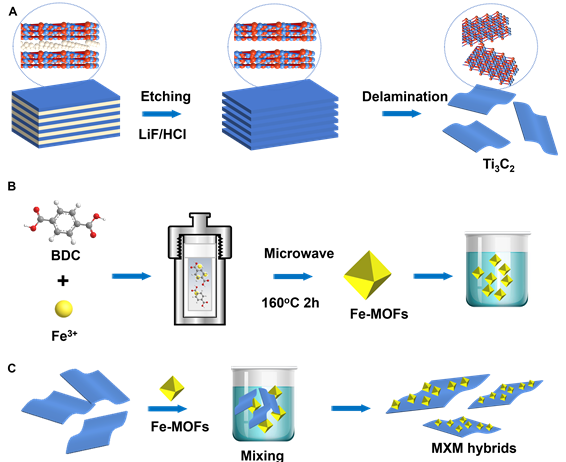
Figure 2. Preparation process of T3C2 MXene, Fe MOFs, and MXM hybrids

Figure 3. SEM images of layered Ti3C2 after LiF/HCl etching
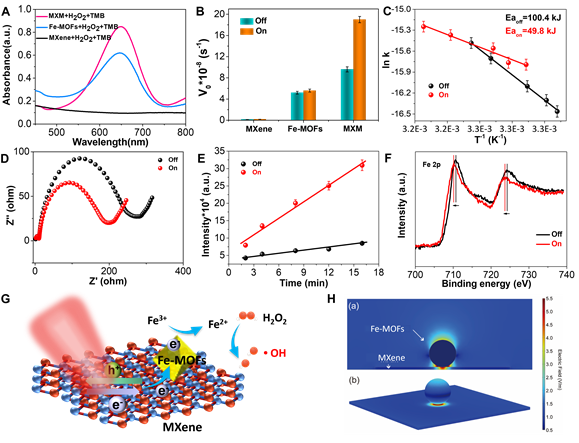
Figure 4. UV Vis absorption spectra of MXene+H2O2, Fe MOFs+H2O2, and MXM hybrid+hydrogen peroxide catalyzed oxidation of TMB
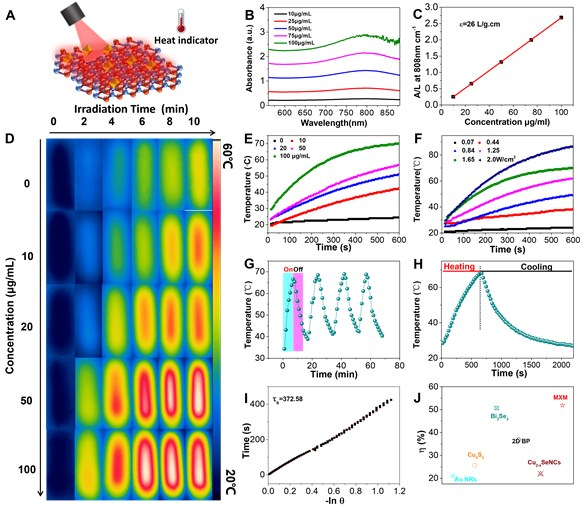
Figure 5. Schematic diagram of photothermal performance of MXM hybrid under 808nm irradiation
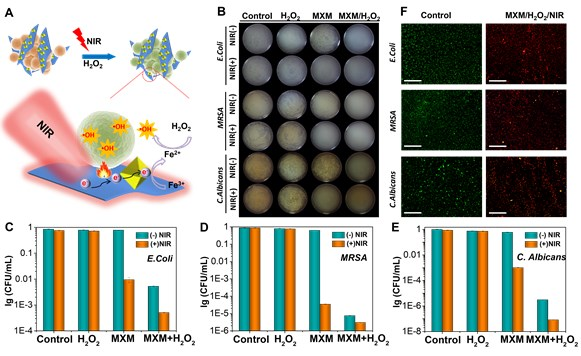
Figure 6. Schematic diagram of the antibacterial mechanism of MXM hybrid under NIR irradiation
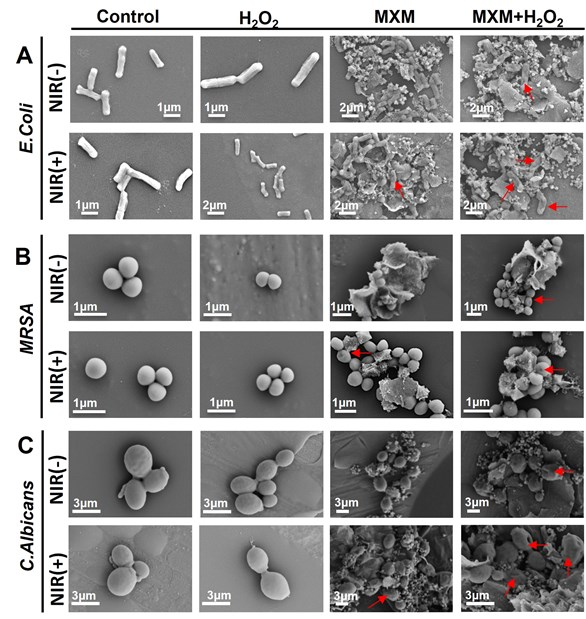
Figure 7. Escherichia coli? Scanning electron microscopy images of MRSA and C. Candida albicans under different samples without or without NIR irradiation
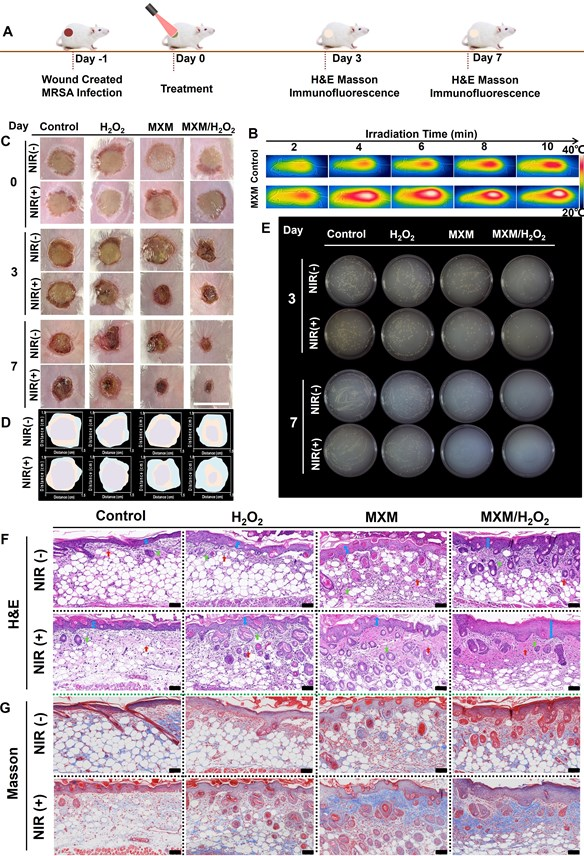
Figure 8. In vivo wound healing process of a burn wound model infected with MRSA
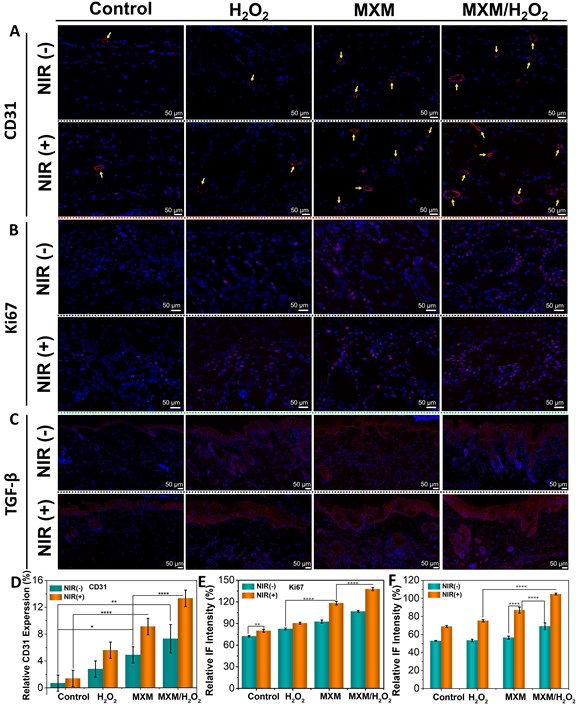
Figure 9. Immunofluorescence staining of wound healing test on day 7
In summary, the study proposes an effective strategy for enhancing the catalytic and photothermal properties of nanoenzymes using near-infrared plasma. Therefore, a Ti3C2 MXene/fe mof composite material (MXM) with near-infrared plasma enhanced CDT and PTT properties has been successfully developed for synergistic antibacterial applications. In this system, MXene nanosheets exhibit significant LSPR performance under NIR irradiation (808 nm), resulting in an effective PTT effect. Injecting the generated hot electrons into Fe MOFs activates the central Fe atom, converting Fe3+into Fe2+, greatly promoting the Fenton reaction and antibacterial effect. The LSPR enhanced photodynamic and photothermal mechanisms of MXM can be well explained through electrochemical techniques, in situ X-ray photoelectron spectroscopy (XPS), and finite element simulation. The synergistic PTT/CDT mediation induced by LSPR significantly promotes the generation of OH and enhances CDT through hot electron transfer. Enhanced CDT significantly increases the permeability of microbial cell membranes and sensitivity to heat. In addition, MXM hybrids have negligible toxicity and good biocompatibility. In vitro and in vivo studies have shown that MXM hybrids have outstanding antibacterial properties, promoting angiogenesis and collagen deposition, thereby accelerating wound healing. MXM hybridization provides a highly biocompatible alternative effective antibacterial platform, while LSPR involves synergistic enhancement of PTT/CDT, providing a promising strategy for treating multidrug-resistant (MDR) bacterial infections and promoting wound healing.

